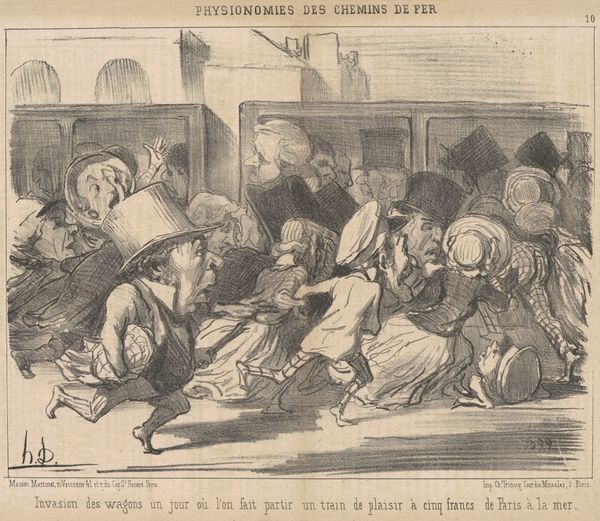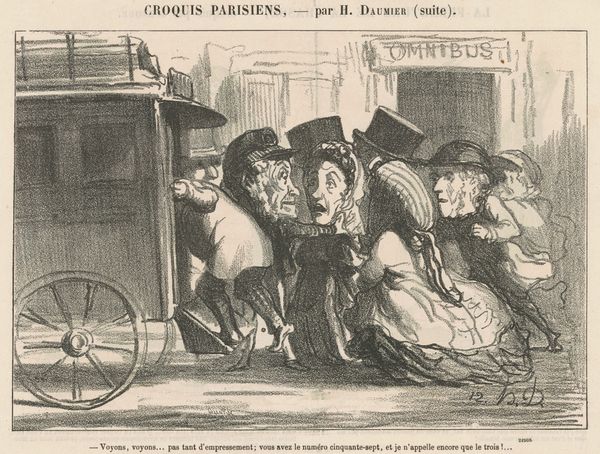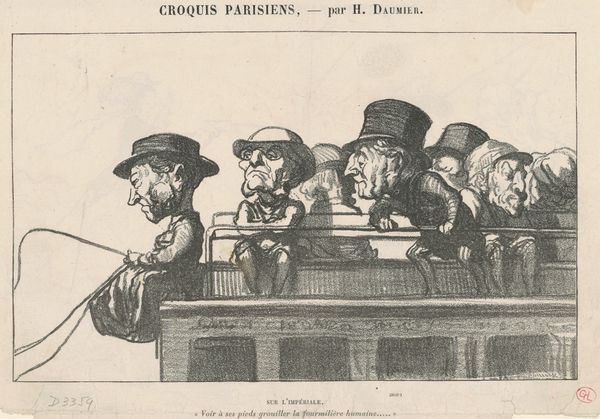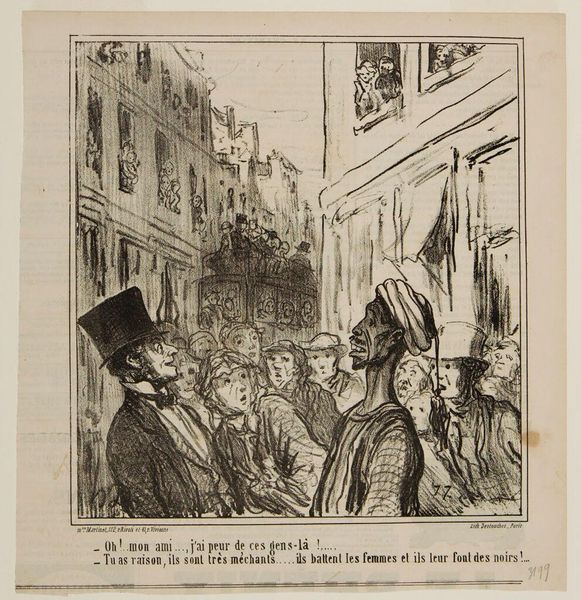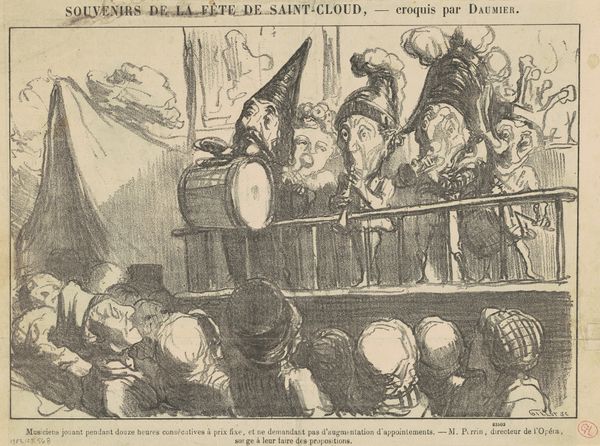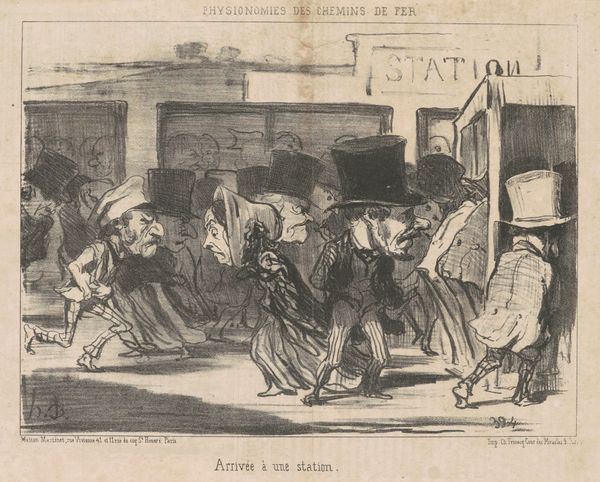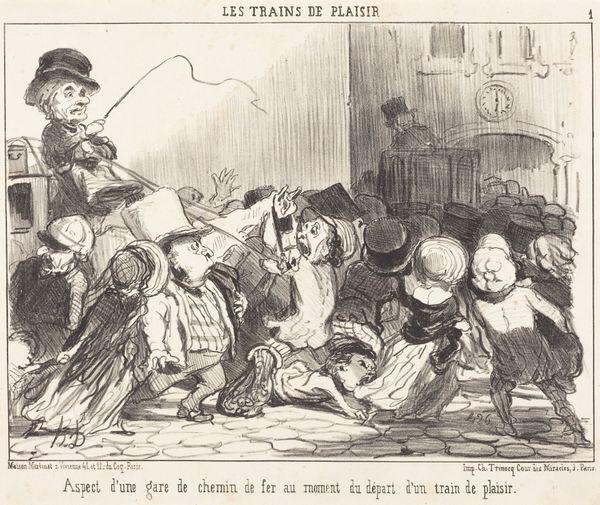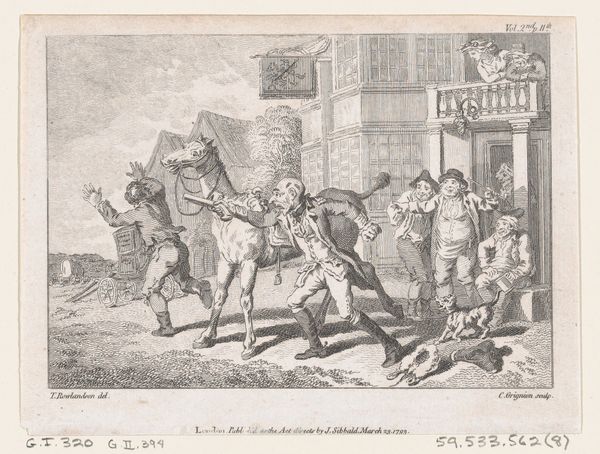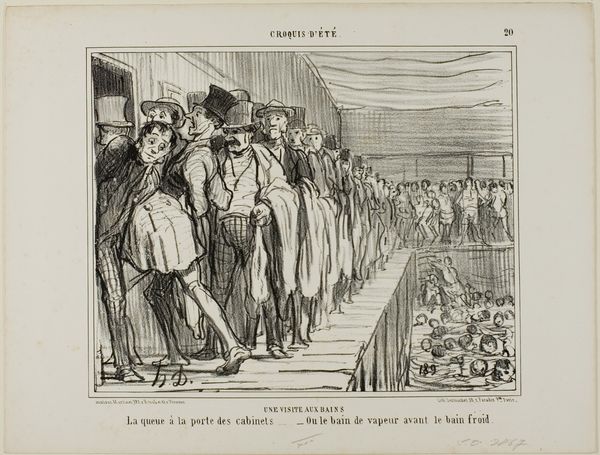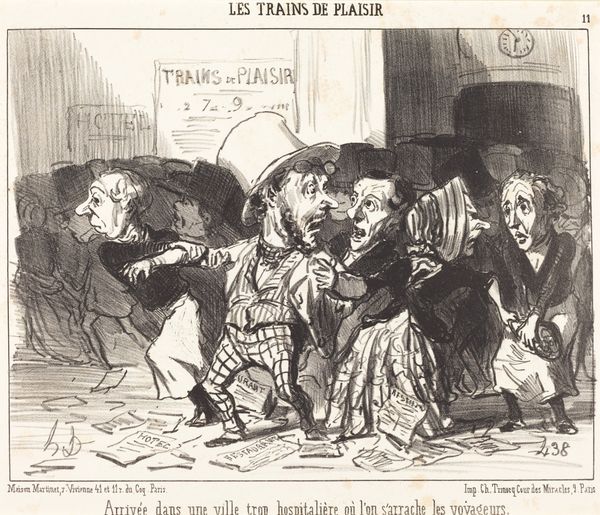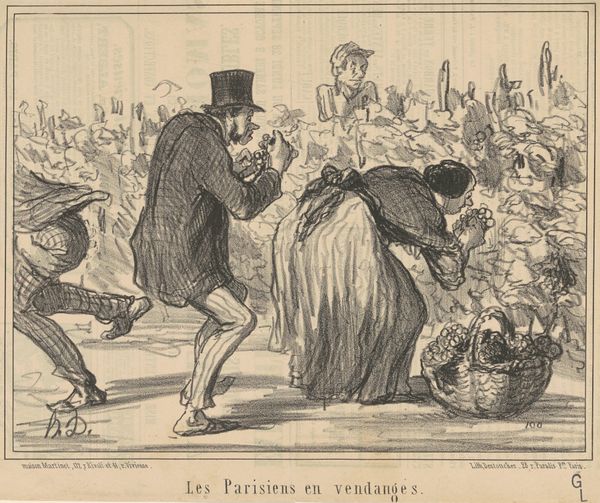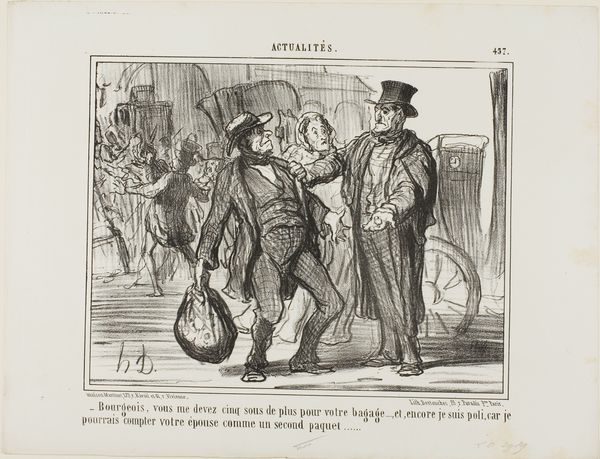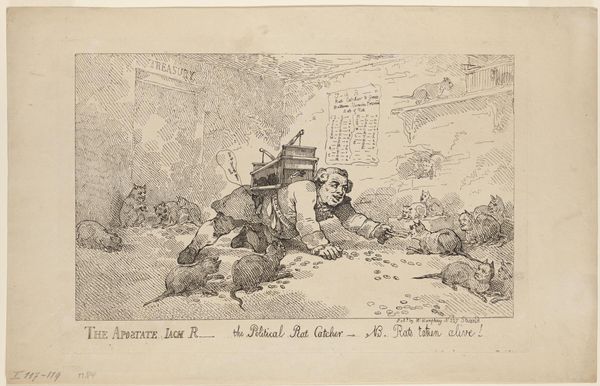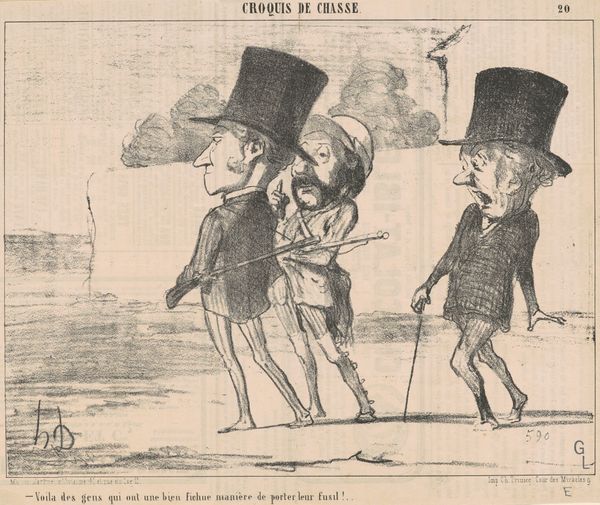
drawing, lithograph, print, pen
#
drawing
#
lithograph
# print
#
caricature
#
romanticism
#
sketchbook drawing
#
pen
#
cityscape
#
genre-painting
Copyright: National Gallery of Art: CC0 1.0
Curator: Let’s consider this 19th-century lithograph by Honoré Daumier, "Les agréments d'une flânerie...". It depicts a bustling street scene in Paris. What is your initial take? Editor: A chaotic energy. It's a frenzy of movement rendered in stark lines, isn't it? There is something theatrical and almost grotesque about these figures, jostling within their perceived societal roles. Curator: Exactly. Daumier's caricatures often functioned as sharp social critiques. Notice the way he distorts the faces and bodies. He isn't just creating an image, he's crafting an indictment of class and societal ambition within Second Empire Paris. The very act of *flânerie*, or idle strolling, becomes complicated, weighed down. Editor: Absolutely. It becomes almost violent. This reminds me of similar symbols of congestion and crowds in other lithographs depicting the rise of industrial culture during the 19th century, although there seems to be a strong anti-bourgeois current here. The hats themselves, tall and proud, look like mocking symbols of a social class on display. Curator: Think, too, of what is left out. There's almost no sense of real joy or authentic interaction. Even the implied sounds would be those of congestion, of disruption. Where are the shopfronts? Where is any depth to suggest community or purpose? Even pleasure feels mechanized. Editor: Yet there's a vitality too, wouldn’t you agree? These people are packed tightly together. We recognize the same symbols today: crowds, ambition, class and status performed under public scrutiny, the discomfort inherent to modernity... even if, to many, the figures look almost spectral due to their grotesque form. It resonates across generations. Curator: I think it serves to show how powerfully Daumier identified the tensions of his own time, the emerging urban spaces, and his anxieties remain poignant reflections on contemporary inequities today. Editor: Indeed. He uses symbols of old traditions to emphasize very contemporary angst, a potent recipe.
Comments
No comments
Be the first to comment and join the conversation on the ultimate creative platform.
